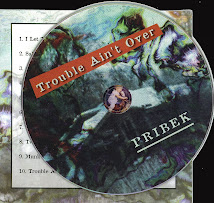




Retrieved by PD and School



Anonymous csven said...
"Mr. Colani ignores these facts"
I'd be surprised if Colani merely ignored facts considering he studied aerospace engineering and once worked for McDonnell-Douglas. While I might be mistaken, I recall reading that he's also included in a patent covering inverted airfoil-shaped racing cars (thus improving high-speed traction/handling). He certainly doesn't follow conventional thinking, but then neither did the Wright brothers.
I will agree with the "shape is critical" part. However, recent breakthroughs relating to drag on the fins of whales suggest that Colani could have gotten quite a bit wilder with his shapes. I'm relatively certain my aerospace professors would have categorically dismissed whale fin-inspired shapes; and they would have been wrong to do so. We'll have to see what comes of those developments (though we should see wind-turbines with "tubercles" from Whalepower Inc fairly soon).
-
I recall seeing all these designs while an industrial design student. Still inspiring.

[source]
Whales, Dolphins Inspire Wind Turbine Tech
Jessica Marshall, Discovery News
July 11, 2008 -- Whales' and dolphins' speed and agility are wondrous to behold -- finely tuned by evolution for efficiency and maneuverability in the water. Now researchers are working to translate these animals' natural innovations into manmade technologies on land, air and sea.
Frank Fish of West Chester University in Pennsylvania began to study the humpback whale fin while on vacation in Boston in the early 1980s, where he saw a statue of a humpback whale in a shop in Quincy Market. He assumed it was sculpted incorrectly, because the figure showed bumps along the front edge of the flipper.
"It just didn't make sense," Fish said. One of the cardinal lessons of fluid mechanics is that the leading edge of a fin or wing needs to be smooth to create the flow that provides lifting force. [SOURCE]





1 comment:
Interesting article about whale fins!
Here is a great web site showing many more Colani designs:
www.colani.org
Post a Comment